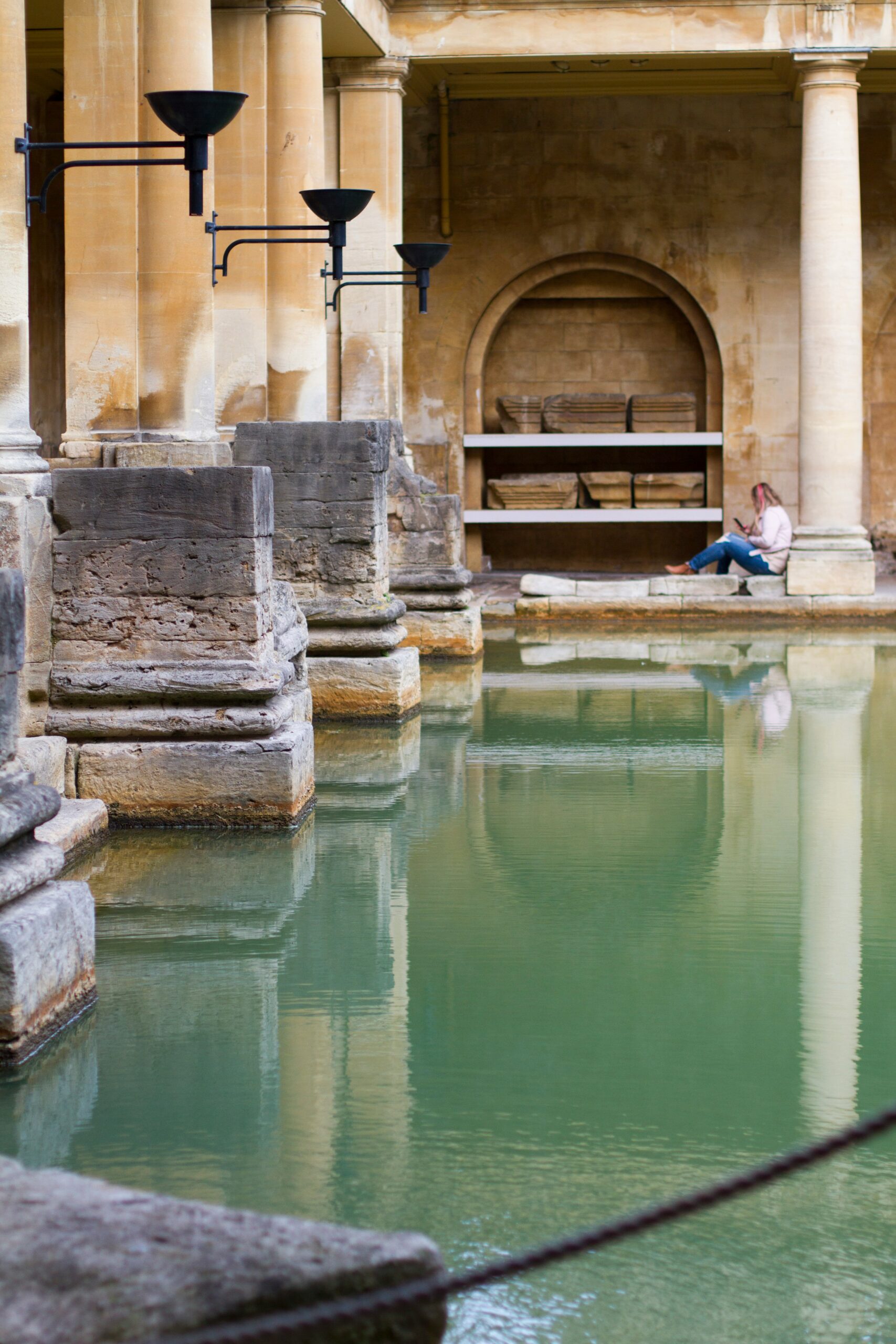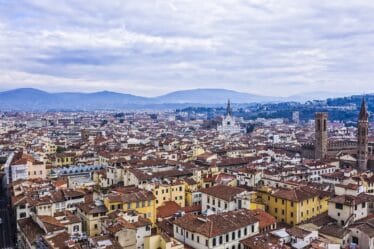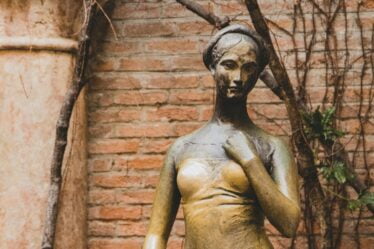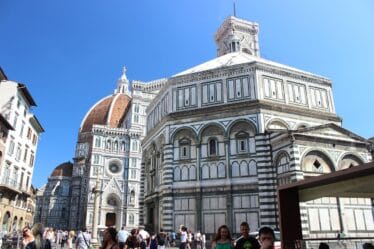

Walking in the street Por Santa Maria, where yo can find Dr Martens shop side sidewalk, towards Ponte Vecchio, in front of the current Falconeri shop, there are three panes, each divided into four glass tiles (now very consumed due to the passage of people), through which you could once see what remained of the ancient road and Roman Florentia’s structures. In certain ways, with a little imagination, you have to travel back in time in order to concretely construct the buildings of the time. First and foremost, we find ourselves at the edge of the Roman city’s fortifications, specifically near the southern gateway. During 1950s excavations, the remains of the door were discovered in via Calimaruzza, a stretch of road and one of the truncated brick towers in defense. According to historian Giovanni Villani, the huge baths of Capaccio (Caput Aquae), named in the medieval period, were also near the walls: “They headed, the called fountains to a large palace, which was called the term caput aquae, but then in our vulgar it was called Capaccio.” This is where the Roman aqueduct finished its race. The heating system, which was to be located between the new market and the Palazzo Davanzati, was utilized for nearly two centuries, with experts dating it between 124 and 130 AD, and was most likely abandoned following the annihilation of the Ostrogoths of Radagaiso at the beginning of the 400. The Terme region, which was outside the walls, was also utilized as a cemetery throughout the Byzantine time. The portion of varied occasional discovery, we must wait for the end of the war, in 1947, the year in which the excavations to form the foundations of the new buildings highlighted a big building rich in marble and mosaics, and a large granite. The Sisto, a porch that extended to the Holy Trinity, was an extension of the spa, and the recollection of “Canto or Pozzo di San Sisto” persisted. Nearby, Giuliano da Sangallo of Palazzo Gondi sculpted a statue of Roman togato, which is today visible inside the courtyard. Other excavations were carried out in the early 1950s, which revealed a spacious lounge with a swimming pool for cold bathrooms, as well as a double gray granite colonnade with Corinthian capitals in white marble. The flooring were white, yellow cards, and blacks with geometric motifs, while the walls were covered in chives, red porphyry, green serpentine, and Siena yellow. Another item for the Roman city of Florence. If you have interest in this story or others, we are organizing a free walking tour of Florence that start from Santa Maria Novella square in front of Minerva hotel.



